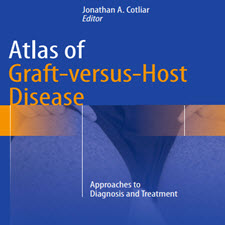The Eye in Pediatric Systemic Disease
ABSTRACT
Perhaps the most frequent question which parents ask pertaining to their infant’s eyes is “What does my baby see?” The answer to this question depends in part on the type of method used to assess visual acuity. The majority of babies should show some fxational behavior at term birth. At 4 weeks, the baby looks at their mother’s face while breast feeding . When the mother moves her face, the child will follow it visually. This movement is interrupted if the mother turns her face away so that only her profle is presented . By 2 months the baby is following better but the pursuit movements tend to be jerky rather than smooth . Smooth pursuit eye movements show the most maturation from 2 to 6 months old, and reaching almost an adult-like gain by 18 months old . Pieh and coworkers found that tracking time was highest when a larger stimulus of 4.78° of visual angle was applied (p<0.022) and when the stimulus was moved at a medium stimulus velocity of 15 degree/s (p<0.0002) . Often, the human face is a better stimulus of fxation than a light source . Goren et al. were able to show that 9 min old infants had a preference for a face-like stimulus over a scrambled face image. Both of these were preferred by the infant over a blank face image.
INTRODUCTION
More objective values for visual acuity in infants depend largely on the method used. In a comparative review of the literature, Dobson and Teller found that visual acuity in the frst month of life measured 20/200–300 by observation of optokinetic nystagmus (OKN), visual evoked potentials (VEP) or preferential looking responses . By 6 months the vision improved to 20/100–200 by OKN and preferential looking but to 20/25 by VEP . Normal values for grating acuity and OKN have been developed for the frst 3 years of life . The range of normal values is very wide in the frst 6 months. Visual development, as measured by these tools, appears to accelerate in the second year of life. VEP can be used to measure visual acuity although the reliability of this technique has been questioned . The data depends in part on the type of VEP used . With sweep VEP Although detailed normative data regarding the volumetric and topographical analysis of the eyeball and its contents are available this discussion will be confned to the clinically relevant dimensions.
چکیده
شاید مکرر ترین سوال که والدین از چشمان نوزاد خود بپرسند، “کودک من چه چیزی را می بیند؟” پاسخ به این سوال بخشی از نوع روش مورد استفاده برای ارزیابی حدت بینایی است. اکثر نوزادان باید رفتارهای مادری را در هنگام تولد نشان دهند. در 4 هفته، نوزاد در هنگام شیردهی به صورت مادرش نگاه می کند. هنگامی که مادر چهره خود را حرکت می دهد، کودک آن را به صورت بصری دنبال خواهد کرد. این جنبش قطع می شود اگر مادر چهره خود را دور می کند به طوری که فقط به او ارائه شده است. با 2 ماه، کودک بهتر عمل می کند، اما حرکات پیگیری به جای صاف بودن، تندتر می شود. حرکات چشم پیگیری صاف، بلوغ بیشتری را از 2 تا 6 ماهگی نشان می دهد و به 18 ماهگی تقریبا به اندازه بزرگسالان می رسد. Pieh و همکاران دریافتند که زمانی که محرک بزرگتر از 4.78 درجه زاویه دید استفاده شد، زمان ردیابی بیشتر بود (p <0.022) و هنگامی که محرک در سرعت محرک محیطی 15 درجه / ثانیه (p <0.0002) حرکت کرد. اغلب، چهره انسان محرک بهتر فشرده شدن نسبت به یک منبع نور است. گورن و همکاران قادر به نشان دادن این بود که نوزادان 9 ماهه ترجیح یک محرک چهره را بر روی یک تصویر چهره درشت دارند. هر یک از این نوزادان بیش از یک تصویر چهره خالی را ترجیح دادند.
مقدمه
مقادیر مطلوبتری برای حدت بینایی در شیرخواران به طور عمده بستگی به روش مورد استفاده دارد. در بررسی مقایسهای از ادبیات، دوبن و تلر دریافتند که بینایی در ماه فوریه زندگی اندازه گیری شد 20 / 200-300 با مشاهده nystagmus optokinetic (OKN)، پتانسیل تشخیص بصری (VEP) و یا پاسخ های ترجیحی به دنبال. با 6 ماه چشم انداز بهبود یافته به 20 / 100-200 توسط OKN و ترجیح به دنبال اما به 20/25 توسط VEP. ارزش های عادی برای گریتینگ و OKN برای 3 سال زندگی به وجود آمده است. محدوده ارزش های نرمال در 6 ماه آینده بسیار گسترده است. توسعه بصری، با اندازه گیری توسط این ابزار، به نظر می رسد در سال دوم زندگی شتاب. VEP می تواند برای اندازه گیری حدت بینایی مورد استفاده قرار گیرد، اگر چه قابلیت اطمینان این روش مورد سوال قرار گرفته است. داده ها بخشی از نوع VEP استفاده می شود. با جاروبرقی VEP اگرچه داده های هورمونی دقیق در مورد اندازه گیری حجمی و توپوگرافی چشم و محتوای آن در دسترس است، این بحث به ابعاد بالینی مرتبط مربوط می شود.
Year: 2016
Publisher: SPRINGER
By : Alex V. Levin , Robert W. Enzenauer
File Information: English Language/ 836 Page / size: 16.63 MB
سال : 1395
ناشر : SPRINGER
کاری از : الکس V. لوین، رابرت ونزنور
اطلاعات فایل : زبان انگلیسی / 836 صفحه / حجم : MB 16.63


![Eye.in.Pediatric.Systemic.Disease.[taliem.ir]](https://taliem.ir/wp-content/uploads/Eye.in_.Pediatric.Systemic.Disease.taliem.ir_.jpg)
![Advanced.Handbook.of.Systemic.Lupus.[taliem.ir] Advanced.Handbook.of.Systemic.Lupus.[taliem.ir]](https://taliem.ir/wp-content/uploads/Advanced.Handbook.of_.Systemic.Lupus_.taliem.ir_.jpg)
![Good.Practice.in.Pediatric.and.Adolescent.[taliem.ir] Good.Practice.in.Pediatric.and.Adolescent.[taliem.ir]](https://taliem.ir/wp-content/uploads/Good.Practice.in_.Pediatric.and_.Adolescent.taliem.ir_.jpg)
![Protein.Deimination.in.Human.Health.and.Disease.Second.Edition.[taliem.ir] Protein.Deimination.in.Human.Health.and.Disease.Second.Edition.[taliem.ir]](https://taliem.ir/wp-content/uploads/Protein.Deimination.in_.Human_.Health.and_.Disease.Second.Edition.taliem.ir_.jpg)
![Pulmonary.Vasculature.Redox.Signaling.in.Health.and.Disease.[taliem.ir] Pulmonary.Vasculature.Redox.Signaling.in.Health.and.Disease.[taliem.ir]](https://taliem.ir/wp-content/uploads/Pulmonary.Vasculature.Redox_.Signaling.in_.Health.and_.Disease.taliem.ir_.jpg)

![THE ROLES OF HORMONES[taliem.ir] THE ROLES OF HORMONES[taliem.ir]](https://taliem.ir/wp-content/uploads/THE-ROLES-OF-HORMONEStaliem.ir_.jpg)
![Treatment of Inammatory Bowel Disease with Biologics[taliem.ir] Treatment of Inammatory Bowel Disease with Biologics[taliem.ir]](https://taliem.ir/wp-content/uploads/Treatment-of-Inammatory-Bowel-Disease-with-Biologicstaliem.ir_.jpg)
![Human.Retrotransposons.in.Health.and.Disease.[taliem.ir] Human.Retrotransposons.in.Health.and.Disease.[taliem.ir]](https://taliem.ir/wp-content/uploads/Human.Retrotransposons.in_.Health.and_.Disease.taliem.ir_.jpg)
![Extreme.Hepatic.Surgery.and.Other.Strategies.Increasing.[taliem.ir]](https://taliem.ir/wp-content/uploads/Extreme.Hepatic.Surgery.and_.Other_.Strategies.Increasing.taliem.ir_-150x150.jpg)
![Facial.Bone.Contouring.Surgery.[taliem.ir]](https://taliem.ir/wp-content/uploads/Facial.Bone_.Contouring.Surgery.taliem.ir_-150x150.jpg)
دیدگاه خود را ثبت کنید
تمایل دارید در گفتگو شرکت کنید؟نظری بدهید!